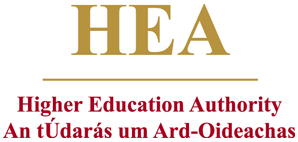About This Archive
Who was Doegen?
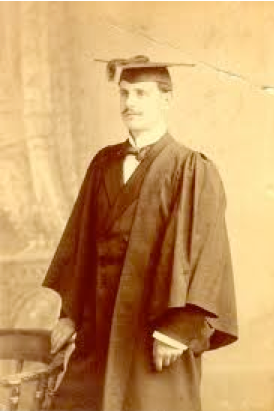
Dr Wilhelm Doegen (1877-1967). ©Humboldt Univ., Berlin
Dr Wilhelm Doegen (1877-1967) was Director of the Lautabteilung, Preussische Staatsbibliothek (the Sound Department at the Prussian State Library), Berlin. Doegen had made recordings with the Odeon Recording Company, Berlin (1909-14) for the purpose of teaching foreign languages at the Borsig High School, where he was employed as a teacher. During World War I, he visited 70 POW camps where he recorded over 250 languages and dialects, as well as examples of traditional music. The prisoners of war recited the Parable of the Prodigal Son in their own language and dialect for comparative purposes. This work was carried out for the Royal Prussian Phonographic Commission (Phonographisches Kommission). It resulted in the production of 1,650 shellac records. Personalbogen (speaker data) were compiled for each speaker and speakers were photographed. The recordings, Personalbogen and c. 50 images are extant and are held at Humboldt University, Berlin. Thirty-five recordings of Irish speakers are included in this collection. Copies of these are accessible in the British Library along with recordings of others who served with the British Army, 1914-18.
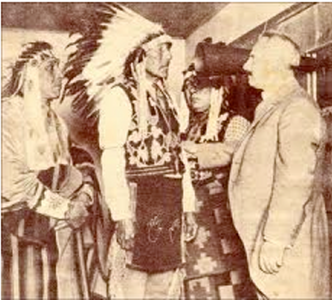
Dr Wilhelm Doegen recording a Native American © Humboldt-Univ., Helmhöltz-Zentrum für Kulturtechnik 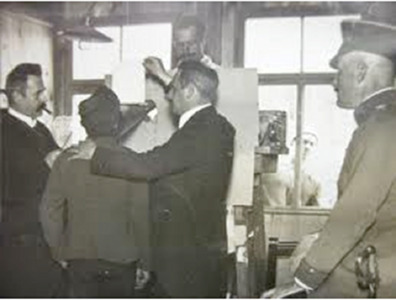
Dr Doegen recording at a World War I, POW camp. ©Humboldt Univ., Berlin
Doegen founded the Lautarchiv (now part of Humboldt University, Berlin) in 1920 and throughout the 1920s he continued to record speakers, particularly in England and France. In 1932 Doegen chaired the Arbeitsgemeinschaft für englisch-amerikanische Arbeitskunde. He was a member of the Gesellschaft für neuere Sprachen, of the Deutschen Gesellschaft der Anthropologie, Ethnologie un Urgeschichte, and of the International Phonetics Association. Anti-semitic sentiment led to Doegen being dismissed from his post in May 1933. He later became an English-language lecturer at Berlin (1947-61). For a comprehensive collection of publications by and on Doegen, go to the Deutsche National Bibliothek website and search for Wilhelm Doegen – http://www.dnb.de/EN/Home/home_node.html
Why did Doegen come to Ireland?
In 1926 the Irish government asked Dr Doegen to make recordings of Irish speech in the Gaeltacht and in areas of the country where Irish had suffered decline. The Department of Education asked the Royal Irish Academy if it would organize such a scheme (Survey of Dialects) and the Academy’s Irish Studies Committee undertook the task. Myles Dillon was Secretary of the Irish Studies Committee during most of the survey work. Suitable speakers were secured and arrangements were made for them to be recorded.
When were the recordings made?
Dr Doegen came to Ireland with his assistant, Karl Tempel, in September 1928. The two men spent a week in University College Cork recording speakers from counties Waterford and Tipperary and from East Cork. They spent the following week at Mercy Convent in Killarney recording speakers from Kerry and West Cork. The recordings for the remaining provinces were carried out by Herr Tempel who returned to Ireland in 1930 and 1931. Recordings were made at:
- University College Galway (now National University of Ireland, Galway) in September 1930 (speakers from counties Galway, Mayo, Clare, Sligo, Roscommon and Leitrim)
- Queen’s University Belfast in September 1931 (speakers from Antrim, Derry, East Tyrone, Armagh, Cavan and Louth)
- The Courthouse in Letterkenny, Co. Donegal, in October 1931 (speakers from West Tyrone and Donegal).
The Irish Studies Committee provided progress reports to the Council of the Academy on an annual basis for the duration of the Survey of Dialects. These were published as appendices to the relevant Abstracts of Minutes of Proceedings of the RIA and are accessible here as pdfs.
How were the recordings made?
Speakers were transferred to the recording location where they were expected to sing a song, tell a story, recite a version of the Parable of the Prodigal Son (based on a copy supplied to them in advance), count numbers or recite a prayer. The recordings were made on wax matrices which were then transported to Berlin where they were converted to shellac.
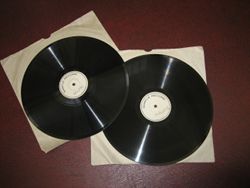
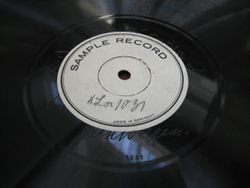
Doegen records at the Royal Irish Academy Library. © Royal Irish Academy Library.
What was recorded?
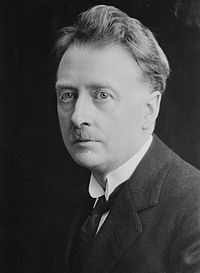
William Thomas Cosgrave. The 212 surviving records which comprise the collection contain some 400 tracks in all. These include folktales, versions of the parable of the Prodigal Son, songs (both sung and spoken), discourses, prayers and miscellaneous items of vocabulary such as recitations of the numbers 1 to 30 or the days of the week. In addition, the collection contains a single track in the English language. This is a recording made by W.T. Cosgrave (1880-1965), who was head of the Irish Government that instigated the Doegen scheme in 1926. A short speech by him was captured on the occasion of the recording of the east Munster speakers in University College Cork in 1928.
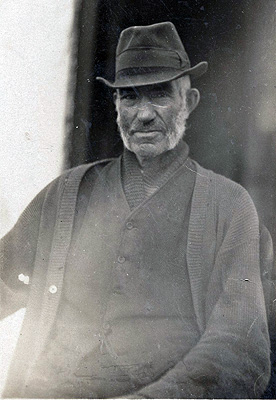
Barney MacAulay (1850-1941), Glenariffe, Co. Antrim. © Royal Irish Academy Library. 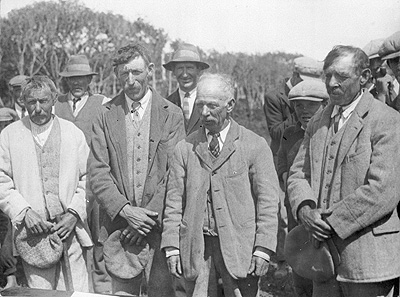
Tomás Mac Con Iomaire (front row, second from left; with the kind permission of the National Folklore Collection, UCD)
Is there supplementary material?
Yes, in addition to the audio material itself, there is a significant body of information about the speakers. After each recording, a detailed questionnaire was filled up by Dr Doegen or one of the members of the Academy’s Irish Studies Committee who was present at the recording session. These forms, called Personalbogen, with questions printed in German, were supplied by Doegen, and were the same as those he used when recording informants in other countries. They contain valuable information such as date of birth, place of birth, addresses at various stages in life, place of parents' birth, level and place of education, occupation, father’s occupation, level of literacy, competence in other languages, musical ability, and religion. The forms sometimes include comments on the quality of the voice of the speaker. The information contained in these forms is now available as an integral part of this electronic archive.
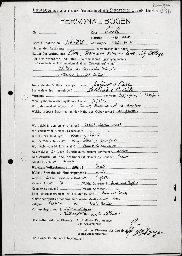
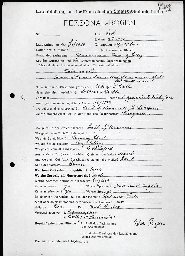
Sample Personalbogen. Courtesy of RIA Library.
A third body of archival material exists in the form of transcriptions and translations of some of the recordings which were made at the time of the original scheme. All of this material has been consulted as part of the work of integrating new and revised transcriptions and translations into this electronic resource.
The original sets of recordings
On completion of the scheme, a total of 216 record matrices had been made. Four of the matrices were broken, however, in transit to Berlin and the collection now comprises 212 shellac records. When the records were manufactured a full set was deposited with the Royal Irish Academy. Another set was divided between University College Cork, University College Galway and Queen’s University Belfast, each receiving the records for their respective provinces. A full set was also kept in Berlin.
1990s CD versions of the recordings
In the mid-1990s the Doegen records for Ulster (both the Queen's University set and the Academy set) were transferred to compact disc under a Queen’s University funded project. In 1999, the Academy Library arranged to have the records for Munster and Connacht transferred to compact disc also. Having secured a Heritage Council Community Grant Award, the Academy Library commissioned Mr. Ted Kendall, Gladestry, Herefordshire, who had carried out the transfer of the Ulster records on behalf of Queen’s, to digitize the recordings for the remaining two provinces.
On checking the records prior to sending them to England, it was discovered that the Academy set for Connacht was incomplete. The Department of Old Irish and the James Hardiman Library at NUI Galway stepped into the breach and the entire set of NUI Galway Connacht records was transported to Dublin and placed at the disposal of the Academy. Consequently, Mr. Kendall was able not only to use the Galway records to fill the gaps in the Academy set, but also in instances where the Galway records produced better quality sound. Archival copies of the raw dubs on gold CD blanks were made for the Academy Library and a number of sets of ‘user copies’ of processed dubs were generated for Academy use and for distribution to universities and other bodies.
The 2007 Higher Education Authority-funded Project
In 2007, as part of the Humanities Serving Irish Society (HSIS) consortium, the Academy was awarded funding under cycle four of the Higher Education Authority's Programme for Research in Third Level Institutions (PRTLI) for the complete web-publication of the Library's Doegen collection. Work on this project began in 2008 with Siobhán Fitzpatrick, Academy Librarian, as project manager, Dr Eoghan Ó Raghallaigh as post-doctoral researcher and Professor Ruairí Ó hUiginn, NUIM, as lead academic partner. The project proceeded in close collaboration with the staff of the Digital Humanities Observatory.
We have now made the digitised recordings available on the web and added transcriptions and translations, together with folkloric and discographical notes as appropriate and information on the speakers and photographs where these could be sourced. Our aim is to bring this valuable part of Ireland's cultural heritage to as wide an audience as possible. We expect that the website will be of benefit to linguists, folklorists, historians, educators, musicologists, genealogists, local communities and the general public. By placing the material in a digital repository we are also making a contribution towards the conservation of the original records as the need will not normally arise for them to be handled or played.
The track ID system
The ‘description of the recording’ which appears at the bottom of each individual track page in this archive makes use of a track ID system which is explained here. The original shellac records have the following serial numbers:
- LA 1031 – LA 1092 (Munster)
- LA 1103 – LA 1177 (Connacht)
- LA 1201 – LA 1281 (Ulster)
Upon digitization the individual bands on each record were separated into individual digital tracks. This system has been followed in the online archive. The identification number attached to each digital track includes:
- the original serial number of the shellac record,
- a letter identifying the collection from which the disc was digitized (d = the RIA set of records; b = the Queen’s University Belfast set; g = the NUI Galway set), and
- a number referring sequentially to the individual band on the disc.
Thus, LA_1107d1 is the first track taken from the RIA copy of record LA 1107, while LA_1173g2 is the second track taken from the Galway copy of record LA 1173.
It may be noted that in the case of some tracks a Second Archive Recording is included as part of this archive. This occurs in the case of the Ulster recordings, where both the QUB set and the RIA set were all digitized. It occurs also in the case of some Connacht records, where there were extra copies of several records in the RIA set. The code ‘dd’ has been used for these copies. Thus, LA_1161dd1 refers to the first track taken from a second RIA copy of record LA 1161. It may be further noted that some of the Munster archival versions include repeats of faulty sections digitized under different groove wall parameters. As mentioned above, gaps in the Dublin set were made good by records supplied from Galway. However, LA 1147 was missing from both the Dublin and Galway sets. This gap was filled by an MP3 version of the recording supplied from the Berlin set.
Why are there different formats of the digitised recordings?
We have made the recordings available in a variety of digital formats in order to cater for different user requirements. Archival copies (see above) may be downloaded in AIFF format. User copies (see above) may be downloaded in AIFF format and in MP3 format, and may also be played on the site itself through Flash audio player.
Who is the man with the hat?
The gentleman on the homepage banner was Antrim speaker, Brian Mac Amhlaoibh (Barney McAuley), born in Ballyemon, county Antrim, June 1850, died in Glenariffe, Co. Antrim, 8 March 1941. For Mac Amhlaoibh’s speaker details click here:
http://doegen.ie/node/2276





